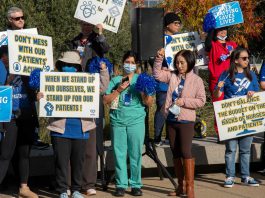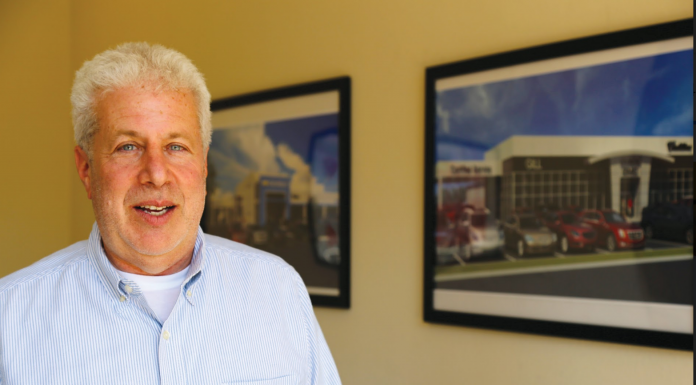GUSD Election: What you need to know
Voters will weigh in on whether they like the state of education and local schools when they choose in November from four candidates for three seats on the Gilroy Unified School District Board of Trustees.
Velasco Leads in Donations
Roland Velasco has raised 20 percent more in campaign funds than Perry Woodward in his bid to be elected Gilroy’s next mayor. According to FPPC filings posted by the city clerk to Gilroy’s website, Velasco has raised $44,194 to Woodward’s $35,899 as of Sept 24.
Meet the Candidates: Rachel Perez
In the first district election in its nearly 100-year history, two candidates are vying for the one contested seat on the Gavilan Joint Community College District Board of Trustees.
Editorial: Can We Trust Perry Woodward?
The bizarre events of December 2015 will be long etched in Gilroy’s political history. Mayor Don Gage stunned the city by resigning without warning a year before his term ended, effectively handing the reins to his political ally, Perry Woodward. The handoff allowed Woodward to run as an incumbent—but not before the duo pushed through approval of a massive farmland annexation that would have, along with other planned developments, made Gilroy one of the Bay Area’s biggest cities—a sprawling urban mass of 120,000 residents, more than double the city’s population today.
Gartman stole parade money but is running for City Council
Americans love a good redemption story, and Gilroyans are being asked to draft a new version of this parable by electing Craig Gartman to City Council in November.One of eight candidates who are vying for three council seats, Gartman served on the council before, from 2001 to 2010. However, it is not his long tenure on the dias—Roland Velasco has served longer—that is raising eyebrows among Gilroy’s electorate, but his misdemeanor grand theft conviction in 2011.Gartman did not want to speak on the record about the conviction for illegally withdrawing money from a local Memorial Day parade committee, which he chaired.Reports from 2011 said the majority of a special fund was used for Memorial Day activities, but a two-year investigation by the District Attorney’s office found that Gartman had misused a portion of those funds, totalling $8,632.00.Gartman was ordered by the court to perform 200 hours of community service and to pay restitution, which he satisfied in December 2011. He also received two years court probation.Gartman paid $6,500 to the Gilroy post of the Veterans of Foreign Wars, in addition to a previous payment of $2,500 in November 2010.The monies were paid to the VFW because the parade fund was pretty much defunct by that time, according to a former prosecutor on the case.Gartman’s community service was completed at the Goodwill of Silicon Valley.For Gartman today, this episode is in the past and he wants Gilroyans to focus on his ideas for the city he represented first on the Planning Commission, then for nine years on the City Council.“I want to talk about issues that are important to the election,” said Gartman, who advocated for the Sunrise fire station and the sidewalk repair program when he was last on the council, during an interview outside Fifth Street Coffee in downtown Gilroy.Among those issues are increasing communication between the council and the electorate, prioritizing more infill, small-scale development and bringing ideas to Gilroy that he gleaned from other communities in which he has lived.“I would love to see Gilroy get into the 20th century [sic] with a lot of the automation that is available via the internet,” said Gartman, explaining that residents should be able to use technology to do things such as easily report a pothole or a city light that has gone out.Being off the council and living elsewhere—Gartman returned to Gilroy in 2014 after moving with his family for his wife’s job to Portland, Maine, then to Dallas—has also given him a unique perspective on the relationship between a city council and the community it represents.“I know what happens when you do policy and plans,” said Gartman, who more recently has been able to observe and appreciate the community’s side.Recalling the furor that erupted over the 721-acre Rancho Los Olivos housing proposal that was approved by City Council last December after it had been rejected by the Planning Commission, Gartman said while he understands the frustration of those who started the urban growth boundary campaign, he does not support Measure H.“Encasing the city for 20 years is dangerous,” he said, “Because you are very limited in what you can do.” He said the measure, which allows for open space, schools, affordable housing, and an allotment of 50 acres per year of general industrial to be brought into the boundary or redesignated, is too restrictive.“You are kind of tying your hands,” he said. Plus, he added, holding an election to get the boundary amended by voters would cost the city each time.Gartman would like to see the Downtown Specific Plan updated, which was adopted while he was on the council in 2005, and get the city to prioritize small-scale development and infill.“We need to establish what that policy is and pass it down to the community development department so when someone wants to develop five or less housing units, they get fast-tracked. We’ve had fast-track before and it worked real well.”He added: “Local developers hire local plumbers, electricians, tradesmen, to come in and do the work. Where large developments from big corporations bring people in from all over California.”Overall, Gartman said he wants to bring his ability to listen to all sides of an issue to a third term on the council.“Someone needs to be on the council who is actually turning an ear to the people,” he said.
City Council Candidate Reid Lerner Wants to Bring Arts
As an architect, Reid Lerner has traveled around the country designing everything from military bases and missile launch sites to a large golf course development outside Fort Collins, Colorado.
New Laws Protect Pets
Pets and pet owners will get new protections thanks to a law passed Sept. 14. that will set standards for boarding facilities requiring them to give animals more space and have fire protection.
Eagle Ridge Drivers: “Someone’s going to get killed”
Drivers are behaving so badly in Gilroy’s gated Eagle Ridge community that residents say they are afraid for their lives. People speed, blow stop signs and have no respect for traffic laws, they said.
A Wet Future for Gilroy?
It was the subject of closed-session chatter this week by the Gilroy City Council and of private meetings before that, so the idea of bringing a world-class water park resort and conference center to town is alive and well.And while traffic and other concerns have been raised since the notion was first reported in August, it so far has not become a contentious issue in the mayoral race.Neither Mayor Perry Woodward nor challenger Councilman Roland Velasco oppose the idea.Both say they want it studied more, to ensure Gilroy’s interests come first, and that citizens’ voices are heard as preliminary discussions move forward with Great Wolf Resorts.The Madison, Wisconsin-based firm is billed as owning the largest chain of indoor water parks in the world. It recently opened one in Garden Grove, California.“I am cautiously optimistic Great Wolf Lodge will be a benefit to the city,” Velasco said Tuesday.“Everything I hear is positive,” Woodward said. “It could be a very nice, complementary use of 30 acres of public land that right now is being grossly underutilized.”Woodward was referring to vacant, mostly weed-choked land and empty, unkempt buildings unseen by visitors on the east side of Gilroy Gardens Family Park, the city-owned botanical theme park on Hecker Pass Highway.That’s where Great Wolf has suggested it might want to build an indoor water park, a 500- to 600-room hotel and a conference and banquet center.Nothing was reported out of Monday’s closed-door city council session where the topic was on the agenda, which means no action was taken on the matter.But city staffers from the planning department and one or more elected officials have met at least five times with company representatives, including the firm’s San Francisco-based attorney, according to Woodward, who has attended meetings.He and his family stayed at the Garden Grove location and had a great time, according to the mayor.“There is still a lot of fact-finding to be done, we are talking in very broad terms how this might work,” Woodward said of the meetings to date.Both he and Velasco said the proposal could be a real win-win if it makes good business sense for Great Wolf, is beneficial to the city and residents’ concerns can be addressed satisfactorily.“I know the Gilroy Gardens board of directors feels like this could potentially be a compatible use for that land, but again, they have to make sure whatever we put there isn’t going to impact their finances negatively,” the mayor said.Woodward also is aware of the sensitivities surrounding the theme park’s finances and suggested Great Wolf could play a sort of rescue role for Gilroy Gardens, which is faced with increased operating costs.The city still is paying off the price of buying the park from its former owners for $12 million, he said. When bonds used to fund the park’s construction were not repaid on time, Woodward said it sort of “forced” a change of ownership.“Gilroy Gardens will need 30 percent more attendance to stay afloat because of increased costs largely associated with the increase in minimum wage,” he said. “This [Great Wolf idea] is in some ways a wonderful opportunity if we can do this in a way that is complementary and drives more visits to Gilroy Gardens.”Great Wolf, he added, markets to people who live within a six-hour drive of their resorts, which could open the door to “an untapped pool of people who could be using Gilroy Gardens.”So far there has been at least one area in which the city’s and Great Wolf’s intentions differ, according to Woodward.“They are interested in a land purchase, I am far more interested in some type of long-term lease where the city keeps ownership and control of that area,” he said.On this point the mayoral candidates appear to be on the same page. Velasco said, “I don’t think there’s any intention on the city’s part to sell the land.”Gilroy City Administrator Gabe Gonzalez has also been involved in all talks to date with Great Wolf’s representatives. Gilroy's not interested in selling land at its theme park, he said.“We consider Gilroy Gardens an asset of the city, and for us, in order to maintain land use control, we would be more willing to do a long term lease than selling,” he said.Nor is anything likely to happen quickly, he suggested.“If you look at the type of project and what is proposed, it does not happen overnight, there’s a lot of lengthy discussion to come,” he said.Woodward expects discussions to continue and said that if all goes well they will result in a written agreement on what needs to happen for detailed planning to begin.






















